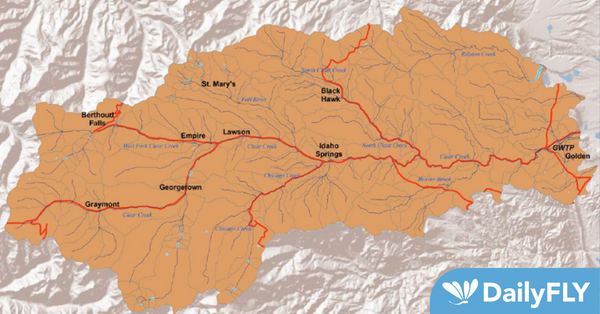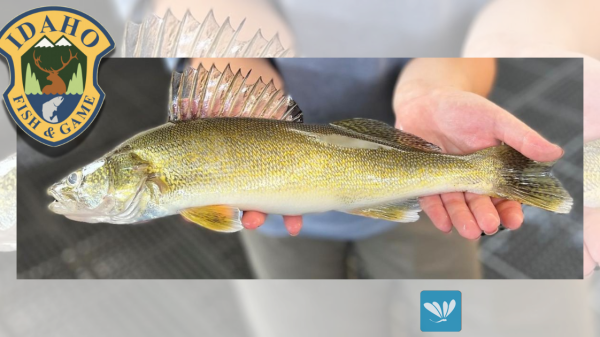KAMIAH, Idaho – Nez Perce – Clearwater National Forests Forest Supervisor Cheryl F. Probert has signed the decision for the Clear Creek Integrated Restoration (CCIR) project. This project represents years of collaboration and compromise, working closely with the Nez Perce Tribe, interested citizens, and user groups.
Covering more than 43,700 acres of National Forest System lands in the Clear Creek drainage near Kooskia, the project lies completely within the ceded territory of the Nez Perce Tribe, and their input was critical to the final project design. Supervisor Probert said about the project, “we have appreciated the opportunity to co-steward this important watershed with the Nez Perce Tribe. I believe we were able to cooperatively develop a project that protects Tribal interests and has something for everyone who came to the table.”
The CCIR project also falls within the Priority Landscape designated by Department of Agriculture Secretary Tom Vilsack on January 19, 2023. Priority Landscapes were selected based on the potential for wildfire to affect nearby communities, critical infrastructure, public water sources and Tribal lands.
Like many western landscapes, the Clear Creek watershed has experienced change factors resulting in forest conditions that are not resilient to wildfire or climate change. Once dominated by western white pine and other seral species, stands in Clear Creek have changed to grand fir and Douglas fir. These shorter-lived species are more susceptible to change agents like insects, disease, and rot, resulting in more dead trees that fuel larger, more intense wildfires. Activities authorized in this decision are intended to restore natural disturbance patterns to increase the abundance of early seral species and reduce fuels available to wildfire. Fuels reduction is an important objective of the Wildfire Crisis Strategy and lessens potential impacts of wildfire to communities and critical natural resources. Tools to reduce fuels include commercial harvest, precommercial thinning, prescribed fire, and reforestation.
Based on the review of all alternatives and considering tribal trust responsibilities, Forest Supervisor Cheryl F. Probert has decided to implement Alternative D Modified. Actions will reduce fuels and improve forest health by treating just over 9,000 acres of forested vegetation using prescribed fire, mechanical thinning, commercial timber harvest and reforestation as tools. Other actions include restoring native grasses for wildlife habitat and improving roads to protect fish habitat.
Timber outputs and revenue from the project will be used to fund watershed restoration activities and to support the economic structure of local communities. Approximately 46,000 thousand board feet (MBF) will be harvested over several years, sustaining over 1,000 jobs and generating approximately $30,682,000 of labor income through commercial timber harvest alone. Additional jobs will be created by prescribed burning, precommercial thinning, reforestation, road decommissioning, culvert replacement, and road improvement activities. There will also be long-term social and economic benefits from more healthy, resilient landscapes that will provide better fishing, hunting and recreating opportunities.
The Clear Creek watershed represents an important area for the Nez Perce Tribe. During project development, the Tribe raised concerns about sediment and a need for more aquatic restoration. The Nez Perce Tribe manages the Kooskia National Fish Hatchery approximately 10 miles downstream from the project area, and the Forest Service worked closely with them to modify the project to reduce potential negative impacts to the hatchery and to tribal treaty rights. Therefore, reducing road density and repairing existing roads and culverts to minimize sediment delivery to streams are primary goals of the project.
The Forest also worked in partnership with the Clearwater Basin Collaborative (CBC) throughout the development of the project. CBC includes representatives from diverse interests including the timber industry, environmental community, recreational interests, sportsmen, local government, and community leaders. The CCIR project demonstrates the commitment of the Forest Service to restore the nation’s Forests through collaboration and public engagement and was part of the Selway-Middle Fork Collaborative Landscape Restoration Project (P.L. 111-11 under Title IV of the 2009 Omnibus Public Land Management Act).
The Final Supplemental Environmental Impact Statement (FSEIS) has been prepared to further review the project alternatives and analysis, to correct and update information that was presented in the Final Environmental Impact Statement (FEIS), and to consider information that became available since the FEIS was published in September 2015. Project documents are available on the project website: https://www.fs.usda.gov/project/?project=38021.

















